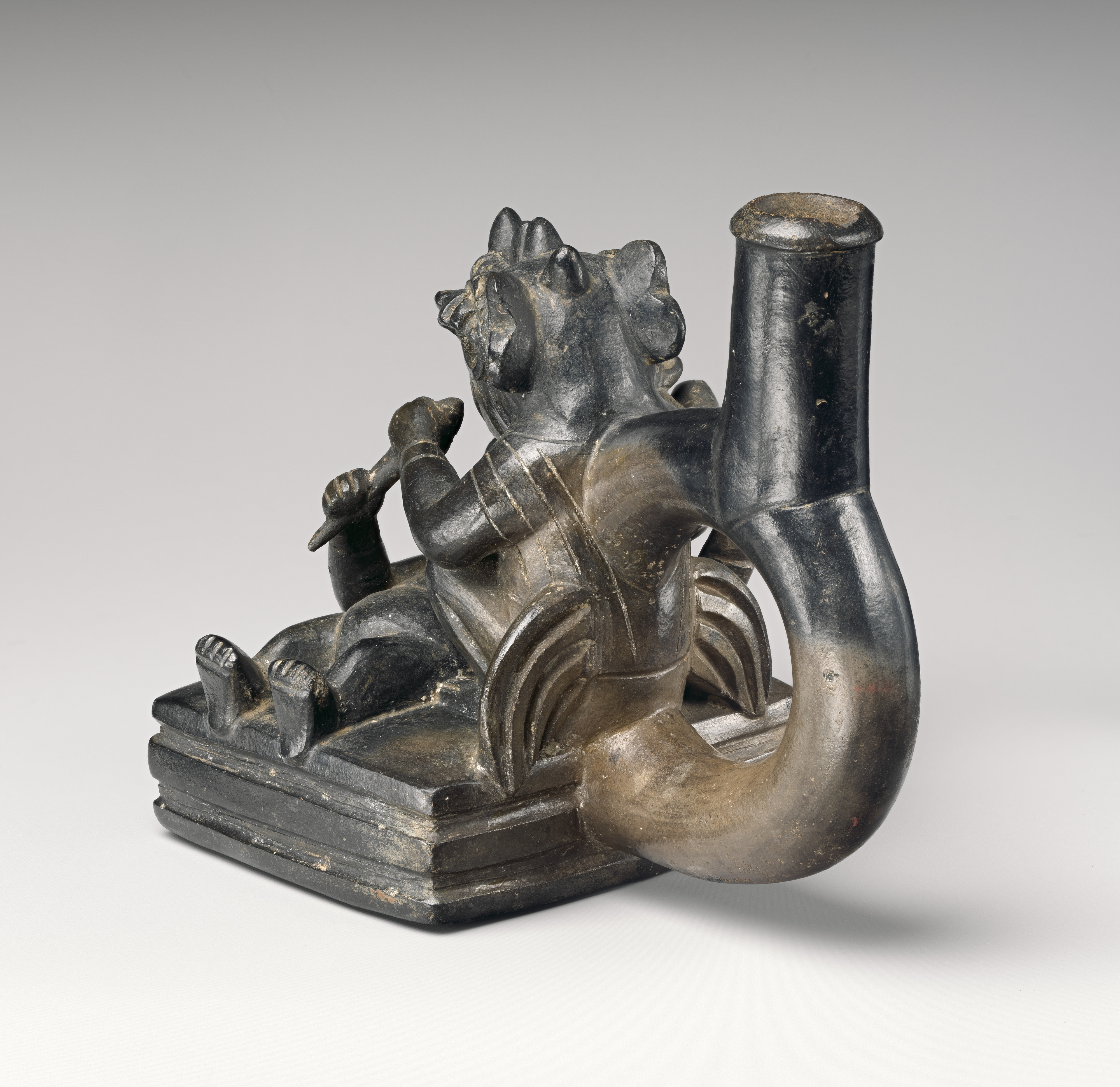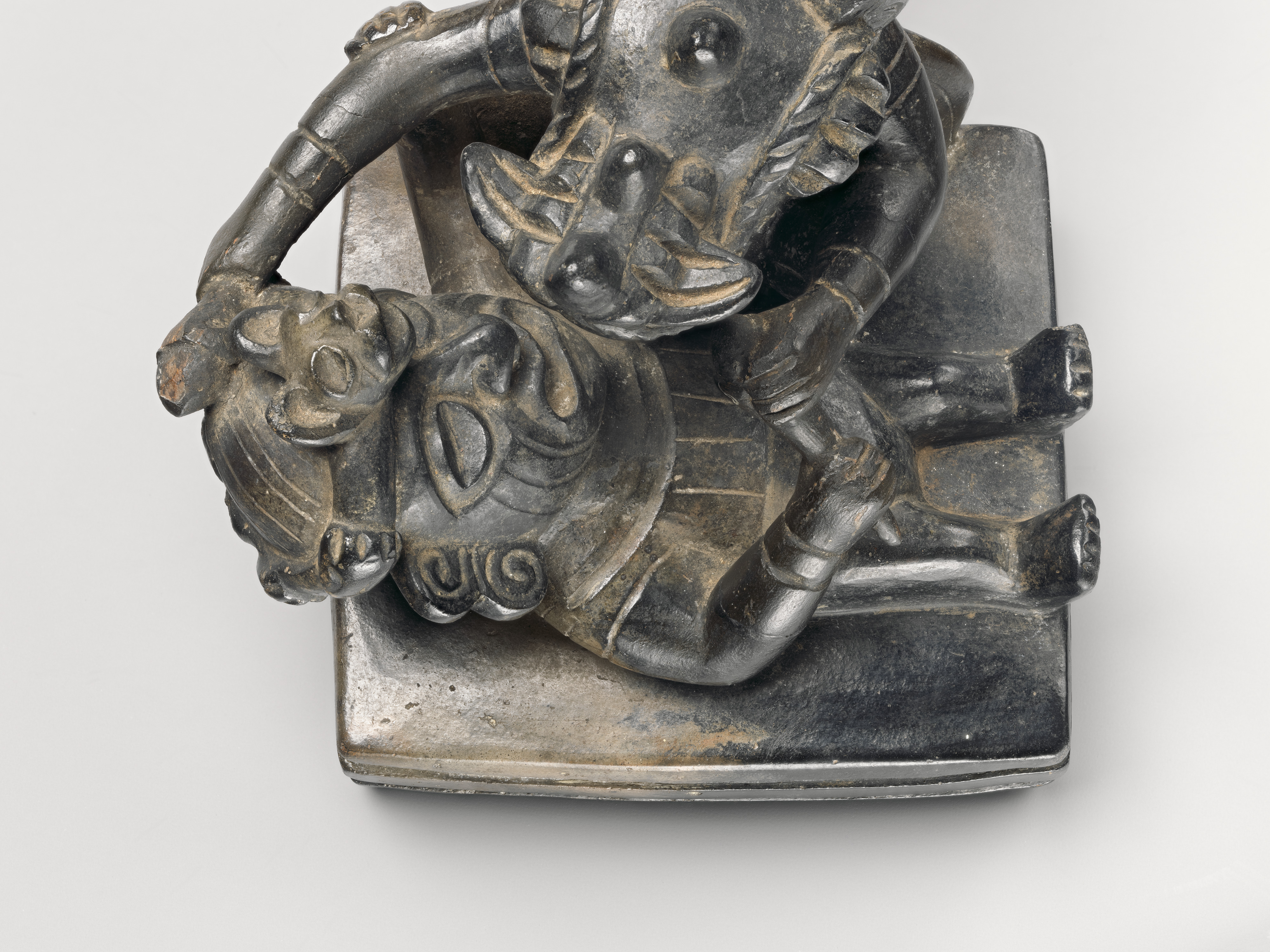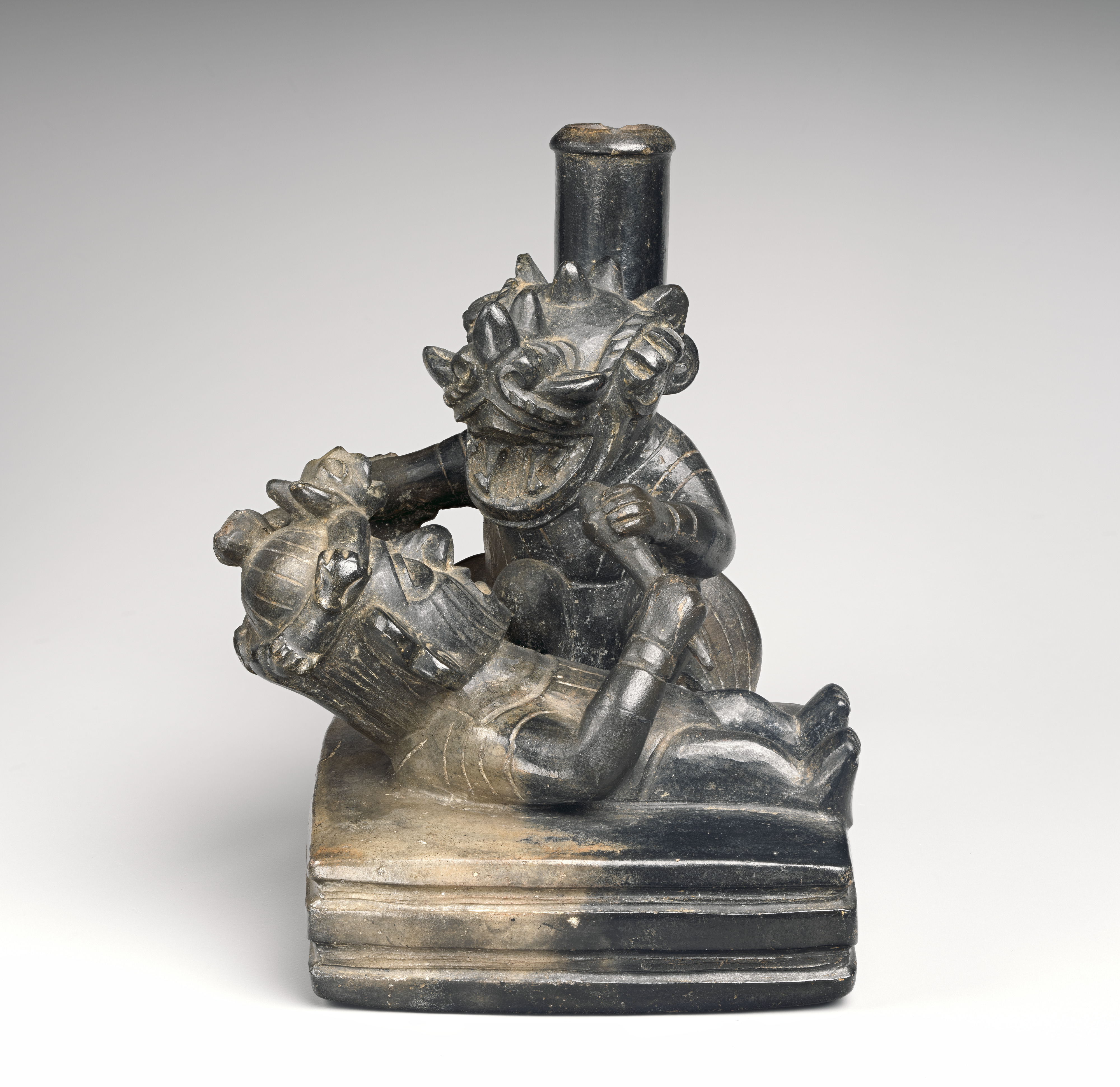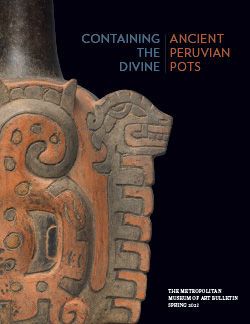Stirrup-spout bottle with combat scene
Not on view
Two figures—an aged, humanlike figure and a being with animal characteristics—are in the throes of hand-to-hand combat. The two figures occupy nearly the entirety of the bottle’s composition, leaving only a shallow platform as the vessel’s body. The wrinkled figure, lying on his back, wears a feline headdress and has bilobular ears, perhaps indicating earspools (see MMA 66.196.40-41). This figure, who appears to be losing the battle with the creature, is often identified as "Wrinkle Face," a central character in a complex saga of cultural heroes (Donnan and McClelland 1999: 64-66). His rival, who appears to be winning, has a human body, a fish-like head, and two fins coming out from its hips. Dubbed the "Fish Monster," he is seen in other bottles, often in a combative stance (For example, MMA 63.112.8, MMA 67.167.5, and MMA 1983.546.18). This creature, with its crest and wide-open mouth, resembles the Pacific anglerfish (Lophiodes caulinaris), a deep-water species.
The sea creature brandishes a warclub in its right hand, aimed at his rival’s head, while the other hand wards off a blow from Wrinkle Face. This scene may depict a dramatic moment in an ancient story: a moment of near defeat before Wrinkle Face emerges victorious and decapitates his rival as a final act (see MMA 1987.394.630). Perhaps based on myths about primordial struggles, the theme provided Moche artists with rich opportunities for compositional exploration.
Moche civilization flourished on the North Coast of Peru between 200 and 800 CE. Ceramics were used to store and cook food, and they were also used in some of the most important rituals of their time. Elaborate vessels such as the present example were used in elite residences and temples, some to end up as funerary offerings. This bottle’s limited chamber seems entirely perfunctory, serving here largely as a platform for the dramatic action. The bifurcated spout—called a stirrup-spout after its resemblance to that part of a horse’s saddle—was common on the North Coast from the second millennium BCE until the arrival of the Spaniards in the sixteenth century CE.
Hugo C. Ikehara-Tsukayama, Senior Research Associate, Arts of the Ancient Americas, 2023
References and Further Reading
Castillo, Luis Jaime, Cecilia Pardo, and Julio Rucabado. Moche y sus vecinos: Reconstruyendo identidades. Lima: Museo de Arte de Lima, 2016.
Donnan, Christopher and Donna McClelland. Moche Fineline Painting: Its Evolution and Its Artists. Los Angeles: UCLA Fowler Museum of Cultural History, 1999.
Makowski, Krzysztof. "Las divinidades en la iconografía mochica," in Los dioses del antiguo Perú, edited by Krzysztof Makowski, pp. 137-75. Lima: Banco de Crédito del Perú, 2000.
Golte, Jurgen. Moche, cosmología y sociedad. Lima: Instituto de Estudios Peruanos, 2009.
Due to rights restrictions, this image cannot be enlarged, viewed at full screen, or downloaded.
This artwork is meant to be viewed from right to left. Scroll left to view more.






